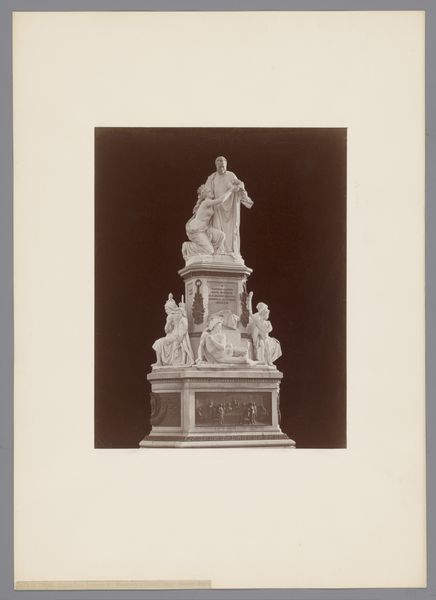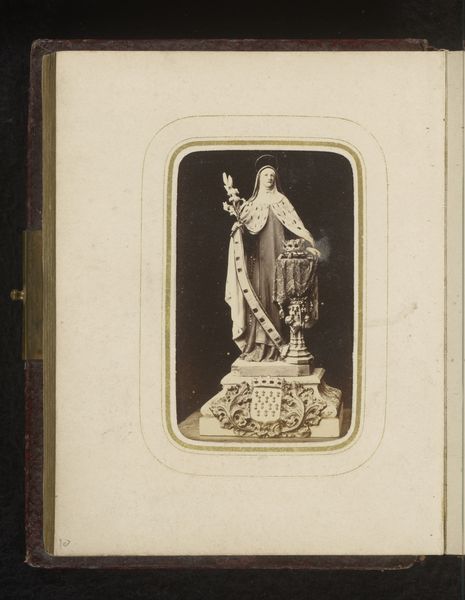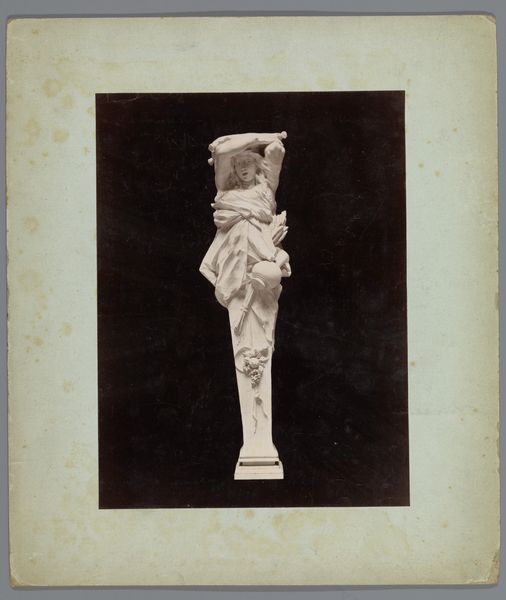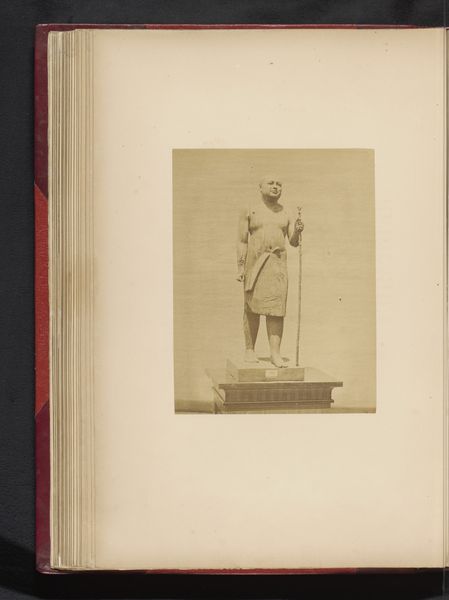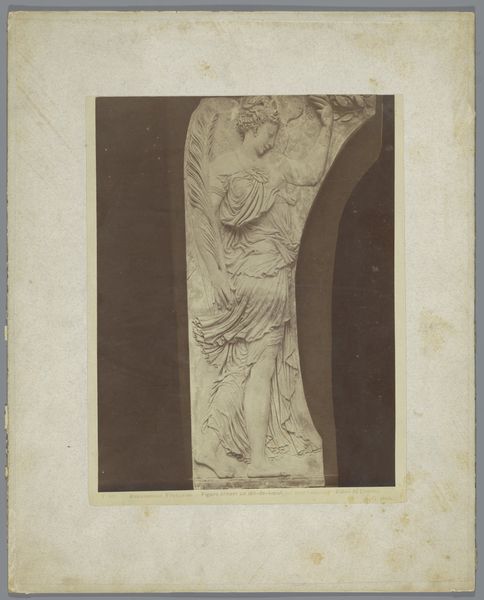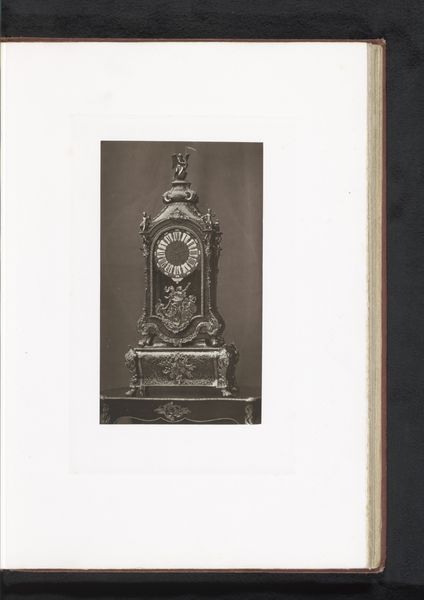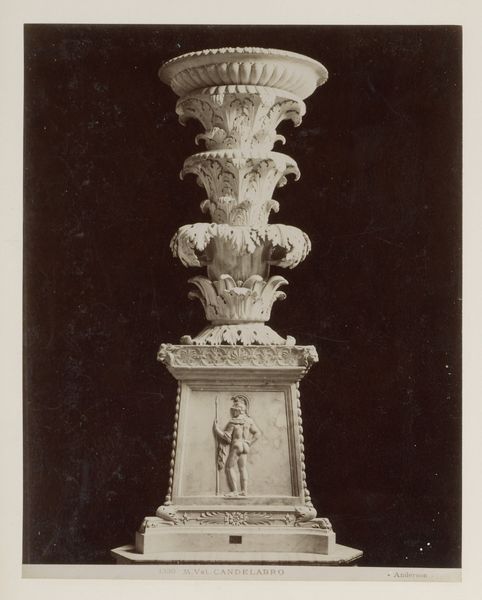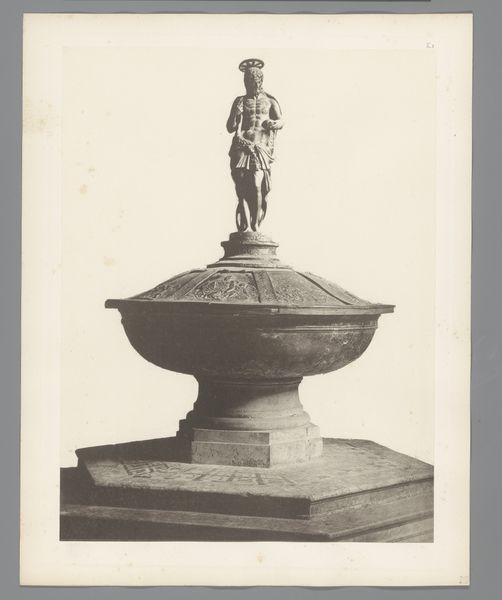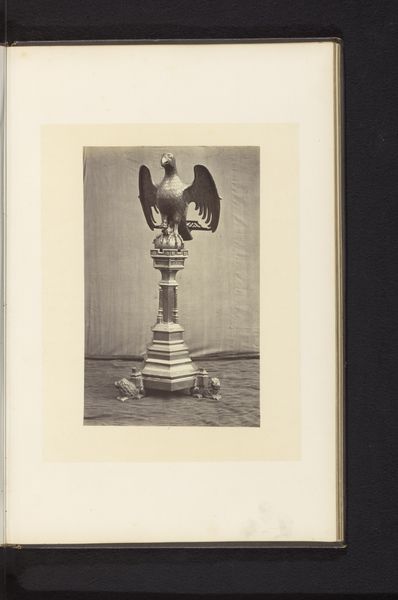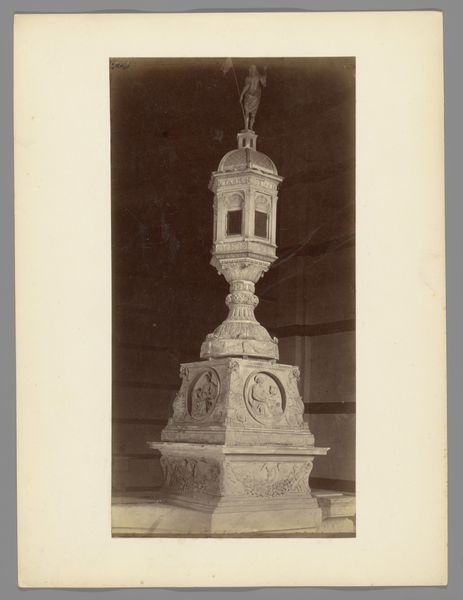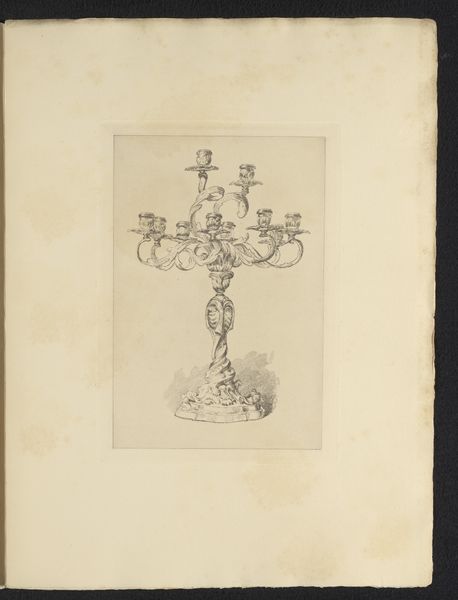
Dimensions: height 136 mm, width 97 mm
Copyright: Rijks Museum: Open Domain
Curator: This is a photograph of Johannes Wilhelmus Franciscus Offenberg’s "Model voor het monument Alcmaria Victrix," created between 1860 and 1880. The image captures a sculpture, revealing details of the piece. Editor: Immediately, I see a somber stillness about the subject and presentation of this image, as though the image itself possesses reverence, not only of the represented subject, but also a sort of melancholic premonition of things to come. Curator: Absolutely. It is fascinating how the neoclassical style is prevalent in memorial sculptures during this period, reinforcing concepts of nationhood through mythologized virtue and heroism that glosses over violence. This memorial embodies this complicated message through this specific sculpture design. Editor: I see the symbolic language is heavily informed by the aesthetic values of classical antiquity: the winged figure, surely meant to represent Victory, conveys a strong impression of heavenly intervention, of fate guiding the subject toward its own glorification and remembrance. What's fascinating to me, too, is how that symbolism translates even through the photographic medium. Curator: Indeed, this photographic image grants us a privileged glimpse into Offenberg’s artistic and political world. It's interesting to examine how Neoclassicism and photography at this time intersect and amplify complex meanings of national identity during the late 19th century through this reproduction. This heroic iconography becomes another lens through which the impact of conflicts and victory are understood through photography. Editor: Right, seeing this image, the winged figure resonates deeply with images of angels on funerary monuments. Beyond mere victory, this symbol becomes interwoven with cultural memory and the rituals of commemorating sacrifice. Curator: Yes, I think it shows how visual language is never neutral and becomes deeply political. It challenges the concept of pure artistic form and questions what values society upholds through memorials like this. The monument design clearly indicates that the artist believes violence, sacrifice, and triumph are fundamentally tied to building identity and purpose for future generations. Editor: Precisely. And while the memorial aesthetic is meant to create solidarity, its image presents something that carries complex layers, reminding us that even celebration cannot always elide sadness. Curator: Thank you for illuminating how these images connect past and present, reminding us of history’s power and our visual culture. Editor: Thank you. It highlights that every image, every choice of symbol, speaks volumes, regardless of time.
Comments
No comments
Be the first to comment and join the conversation on the ultimate creative platform.
